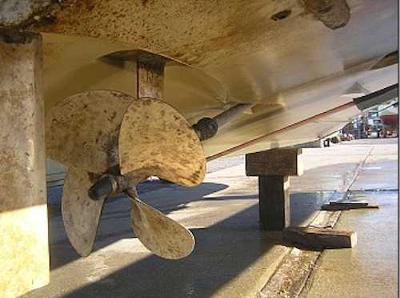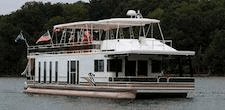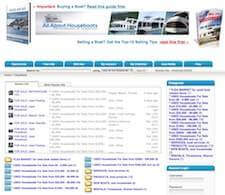Grab your free gift, our online Houseboat Magazine, when you sign up!

Houseboat Maintenance Tips for aluminum, wood, steel, and fiberglass hulls
by IAN from www.all-about-houseboats.com
When it comes to the pros and cons of the perfect houseboat hull material, the jury is still out. Now if you look at what materials have become popular, you would see that fiberglass and aluminum are the most popular materials used in production style houseboats, yet wood and steel are still popular amongst the DIY homemade houseboats.
Now let's look at some simple and environmentally effective tips to maintain your houseboat. Now if you are in the market to buy a houseboat, you should first have a look at our money savings tips on buying a houseboat.
Fiberglass Hulls
Fiberglass hulls can look impressive when they're all polished up, but that should not be attained at cost to the environment. Before launching, a rigorous cleaning with a pressure washer will do a very effective job alone.
Once the boat is clean, apply a couple generous coats of wax to the hull. The wax will make your hull shine, slow the build up of marine life, and increase efficiency of engines. Throughout the season, frequent cleaning will loosen up nearly all build up of pollutants and marine life, eliminating the need for chemical solutions.
If some chemical usage is unavoidable, check for alternatives with phosphate free and biodegradable labels. Keep a watch out for alternative methods and products.
Aluminum Hulls
Aluminum is a highly resistant material, lightweight and long lasting, and from a maintenance point of view, requires very little yearly maintenance. You would want to keep a constant eye on the potential electrolytic galvanic corrosion. One of the simplest methods is to use a galvanic isolator to help protect your investment.
Wood Hulls
Wood hulls need to be properly sealed. Ensuring a good caulking job has
Steel Hulls
Steel hulls also need regular maintenance since rust and plate thickness are a common issue. One of the major misconceptions is that the exterior is what to look at, yet the rust and perforations are all likely to start from the inside of the bilge, especially in the far reaches in the nooks and crannies.
General Tips
On all of the different types of hulls, any scraping, sanding or grinding must be done with care. Paint chips and dust need to be contained to protect against toxins invading the soil and ground water. Many boat yards now insist on clean practices, and so should every boat owner.
* Use power sanders that have a vacuum attachment
* Sweep up worksite regularly and contain paint chips for disposal
* Avoid sanding on windy days
* Use tarpaulins to contain dust
 increase sales and profits with targeted traffic? Act now to get our 1/2 price sale, limited offer |
Lastly, hopefully some of our readers and visitors will share and post comments about their own houseboat maintenance tips and experiences.
Feel free to use the "Click here to post comments." link found near the bottom of this page.
Thanks again for sharing, IAN from all-about-houseboats
Free Bonus Offer |
Comments for Houseboat Maintenance Tips for aluminum, wood, steel, and fiberglass hulls
|
||
|
||














